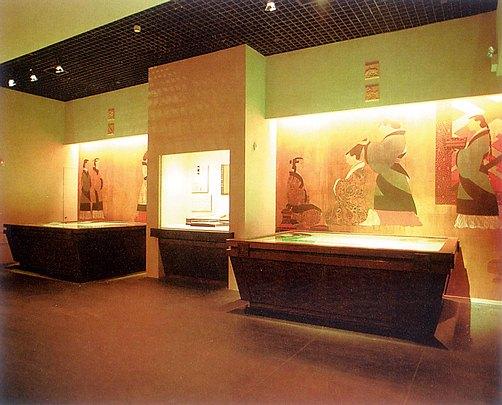
Located on Dongfeng Road, near Nianjia Lake (Nianjia Hu), the Hunan Provincial Museum (Hunan Bowuguan), is one of China's better museums. The complex has three main buildings, one of which covers revolutionary history and two that are devoted to the Western Han (206 BC-24 AD) tombs that were discovered at Mawangdui, 4km northeast of Changsha.
The tombs, discovered in 1972 and containing over 3,000 antiques, were the burial ground for the Marquis of Dai, Li Cang, and his family. Li Cang was Prime Minister to the King of Changsha between 193 and 186 BC. The bodies, considering their age, remain in very good condition, especially the Marquis's wife, Xin Zui, who died in 186 BC. The reason for her excellent preservation was the body, that was wrapped in over 20 layers of silk and linen, a triple layered wooden sarcophagus, that was sealed with charcoal and white peat, and a tomb, that was lined with clay and charcoal. The Marquess can now be viewed in the basement, partially unwrapped and preserved in a liquid-filled Perspex tank. Her organs are in separate jars, and from laboratory tests, scientists were able to establish that the Marquess suffered from a variety of illnesses, from tuberculosis and the bilharzia worm to arthritis.
A variety of silk garments & fabrics, lacquered bowls, musical instruments, wooden tomb guardians, funerary offerings and the enormous outer timber caskets of the sarcophaguses are displayed in the basement of the other building. Of special interest include the silk banners that display the Han beliefs on the underworld, earth and the heavens. On the second floor of the smaller building, just outside, auspicious symbols of long life are exhibited, including some live reptiles.
